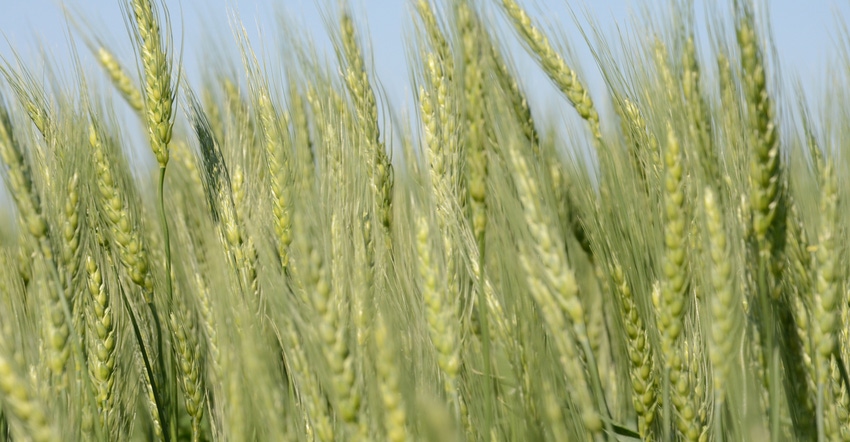September 8, 2020

If you took inventory of all the diseases and pests that have your future wheat crop in their sights, you might not think of raising wheat. Yet there are tactics you can use to get your wheat crop off to the right start, including treating that seed before planting.
“When we look at the wheat-growing regions in the West, including Colorado, Wyoming and Montana, there is a diverse complex of disease and insect pests to be concerned about,” says Jeff Hopp, an agronomic service representative based in Berthoud, Colo. “With fall wheat seeding quickly approaching, it’s a great time — whether you’re planting certified seed or bin-run seed — to consider a seed treatment. A high-quality seed treatment can provide the first line of defense to get your wheat crop off to a good start.”
Wheat seed treatment is still catching on around the country for fall- and spring-seeded crops. Yet there are benefits. The University of Nebraska-Lincoln, as far back as 2014, shared that fungicide seed treatments can help reduce losses caused by seed-transmitted and soilborne-fungicide fungal diseases in wheat.
The seed and soilborne pests are widespread — including common bunt, which is also known as stinking smut; loose smut; black point; ergot and diseases caused by fusarium. All are targeting your wheat yields with blights or damping off that can turn a healthy-looking crop into a poor performer.
Fusarium, Rhizoctonia and pythium are all in the soil. “These three are the nibblers and feeders, and they’re primarily soilborne,” Hopp says.
The choice to treat
Hopp notes that farmers are balancing the cost and value proposition of seed treatments. “When looking at return on investment, oftentimes seed treatments are overlooked, and growers may not understand the true value that a high-quality seed treatment can bring,” he says.
Since that 2014 report by UNL was written, the world of seed treatments has evolved to include more than a fungicide or two. And the fungicides themselves are changing.
The complex of tools that can be applied to the wheat seed can cover a range of challenges. One tool is the advent of insecticides as systemic seed treatments can help against more than diseases. “For example, CruiserMaxx Vibrance Cereals fungicide plus insecticide seed treatment can get the crop off to a healthy start,” Hopp notes. He explains the combination can protect seed and seedlings from early-season diseases and wireworm, while protecting the stand as the crop progresses.
That added insecticide, such as Cruiser 5FS, can also help control disease vectors. For example, barley yellow dwarf virus is spread by aphids and greenbug. A treatment of a systemic insecticide, such as Cruiser 5FS, can mitigate that first overall population of aphids, Hopp says, when they move out of other crops or a green bridge, primarily early in the season.
“If a farmer is planting earlier, he has a higher risk of the potential of having aphids migrating in or greenbug infestation. Both will feed on the current crop and then reproduce,” he says. “Consider the addition of Cruiser 5FS insecticide seed treatment to help manage the later migration by reducing the overall population.”
The development of fungicides has advanced, providing new modes of action to take on diseases that have evolved resistance. When reviewing your seed treatment, consider the modes of action for those fungicides to make sure you’re hitting disease pressure with a full spectrum of control. For example, a new product — designed solely as a seed treatment — is Vibrance, from Syngenta. It’s paired with CruiserMaxx insecticide as a full-spectrum seed treatment. For resistance management, that package has Group 3, 4, 4A and 7 modes of action in a single seed treatment.
Solid start
Hopp notes that if you’re buying certified seed, talk to your dealer about seed treatment choices. If you’re going the bin-run route, working with a dealer for treatment will include cleaning that seed first. And if you’ve never treated, you could run a trial on your farm. Hopp recalls work five years ago in Colorado.
“A lot of growers were trying CruiserMaxx Vibrance for cereals and commented on how robust the crop looked and the early stand establishment they saw,” he recalls. “A few growers didn’t have enough treated seed to finish, so they went with untreated seed. What they saw was that the treated stand emerged better and had more uniform survival during an extreme winter.”
About the Author(s)
You May Also Like






